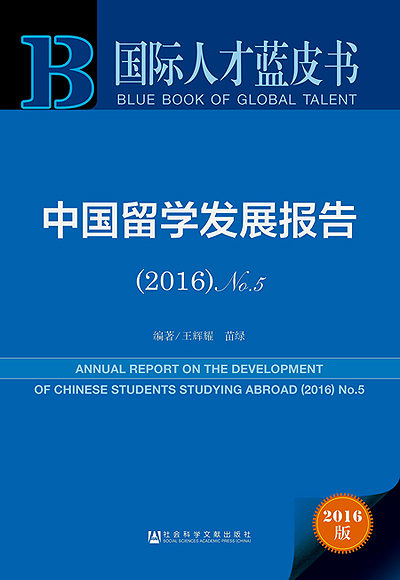Number of mobile students out of, and into, China soars
May 30 , 2017Of the five million international students studying higher education courses outside their own countries, one in four are from just one country: China. But now most Chinese studying abroad are returning home – the outbound-to-return ratio has risen to 82% over the past four years, compared to one in three returnees a decade earlier – and China is attracting hundreds of thousands of foreign students to its shores.
In all Western nations with large numbers of foreign students, Chinese are by far the most numerous. China is the largest source of international students in English-speaking countries such as the United Kingdom, United States, Australia and Canada.
However, growth in the number of Chinese studying abroad has slowed since 2015, with a year-to-year growth rate of 14% compared with the startling annual average rate of 19% between 2000 and 2015.
The case of America
American universities are still the main attraction for Chinese students and US institutions enrolled 330,000 Chinese last year or nearly one in three of the total. That compares with 166,000 students from India, the second largest supplier of foreign students.
According to the US Institute of International Education’s Open Doors report for 2015-16, the number of international students enrolled in US higher education increased by 7% from the previous year to more than one million for the first time.
China remains the top sending country, with almost twice the number of students as India, although India’s rate of growth and absolute increases are outpacing that of China’s.
Students from the top three countries of origin – China, India and Saudi Arabia – now represent 53% of the total enrolment of international students in US universities.
As the report notes, this was the 10th consecutive year of increasing numbers of foreign students in higher education: “There are now 85% more international students studying at US colleges and universities than were reported a decade ago.”
As other countries with large numbers of foreign students are aware, their value to the national economy is often enormous. In the US, the Department of Commerce reports that international students contributed more than US$35 billion to the economy in 2015 – up from US$31 billion the year before.

In its 2016 Bluebook Report on Chinese Studying Abroad, China’s Center for China and Globalization(CCG) says the number of Chinese undergraduates in the US now exceeds that of Chinese graduate enrolments. The report says this aligns with the overall trend that more and more young Chinese students “have been sent to study abroad”.
“In terms of their choices of schools, Chinese students are paying more attention to the schools’ reputation and career development services, instead of tuition fee and other spending issues,” the report states.
The case of Britain
British universities have also increasingly benefited from a Chinese student influx dating from the early 2000s.
In the five years to 2012, for example, the number of students from China and the other Chinese-speaking nations jumped from 81,000 to nearly 200,000 while the totals from the other top 10 sending countries remained virtually flat.
The UK Higher Education Statistics Agency reports that for 2015-16, the number of students from China far exceeded any other nationality, at 91,215.
The agency also notes that China is the only sending country showing a significant increase in its student numbers whereas enrolments of Indian students coming to Britain continues to fall, with a startling overall 44% decrease in the last five years.
A 2015 study, carried out by economists at the UK consultancy PwC and the business lobby London First, found that international students made a net contribution of £2.3 billion (US$3 billion) a year to the UK economy in London alone and supported 70,000 jobs in the capital. The economic contribution of students from China comprised a significant proportion of that sum.
Brain drain easing
While China is the world’s largest source of foreign students, the number of Chinese studying abroad who opt to return home has also been steadily increasing in recent years.
Statistics compiled by China’s Ministry of Human Resources and Social Security indicate that a record high of 432,500 ‘returnees’ arrived back in China last year, drawn by the booming Chinese economy.
The ministry says the outbound-to-return ratio increased by about 10% in the past four years to 82% in 2016 – yet a decade earlier, only one in three of all Chinese students returned home after finishing their education abroad.
Among Chinese students who obtained masters degrees abroad, more than 60% had returned home and nearly half of them were in the major municipalities such as Beijing, Shanghai and Guangzhou.
And as reported by University World News, China’s drive to attract more international students to its universities is paying off, with nearly 400,000 students from overseas studying in China in 2015, according to official figures.
The number surpassed the government’s 2015 target of achieving an overall international student population of 350,000 by 2015.
This year China stepped up its drive to attract overseas talent, announcing among other initiatives new measures to allow foreign students to stay in China to work after study and reducing red tape around residence permits.
One Belt, One Road
Referring to China’s massive ‘One Belt, One Road’ project, theBluebook Report says this could contribute more growth in the number of international students in China: “But more efforts are needed to provide sufficient scholarship and entrepreneurship opportunities, among other incentives, to attract more to study in China.”
Launched by President Xi Jinping in 2013 as a foreign policy and economic strategy, the project will economically link Europe to China through countries across Eurasia and the Indian Ocean, with other links to Africa and Oceania. The initiative envisages the building of six major economic cooperation corridors and several key maritime pivot points across Eurasia.
As the Asia Times reported on 13 May: “As much as [the project] will act as a boost to economies from Bangladesh to Egypt and Myanmar to Tajikistan, it is also a far-reaching economic-free trade-investment plan that will open up markets for Chinese technology and merchandise. And with this comes priceless geopolitical reach for China.
“In parallel to this connectivity extravaganza, arguably spanning 65 nations, 60% of the world’s population and a third of global economic output, China will accumulate extra capital from Central Asia to the Middle East. It will also polish its status as leader of the developing world, allowing it to once again try and reignite the 120-nation Non-Aligned Movement.”
And almost certainly spread more Chinese students along the world’s new ‘Silk Road’ while also attracting increasing numbers of foreigners to its own universities.






